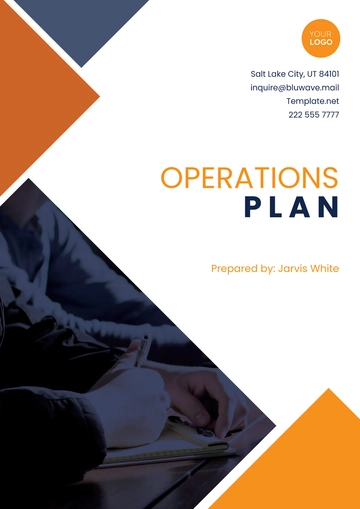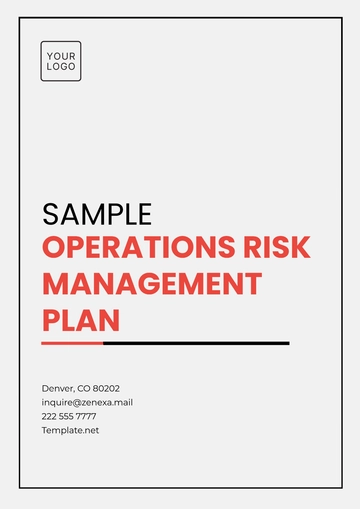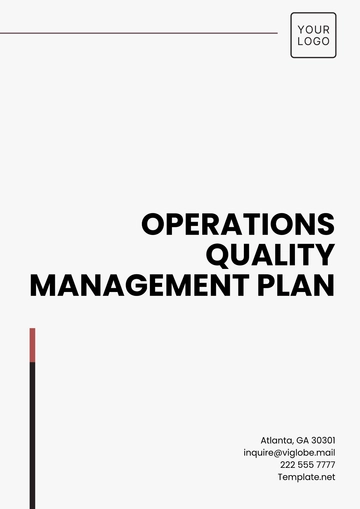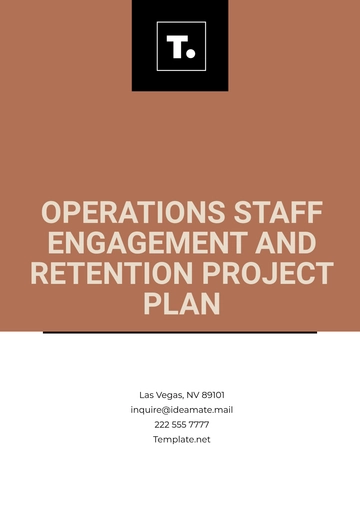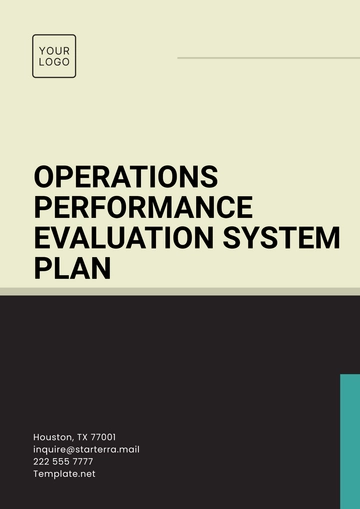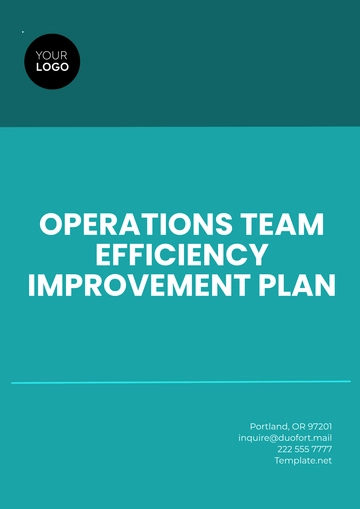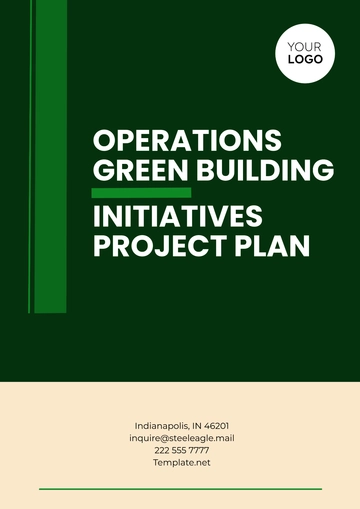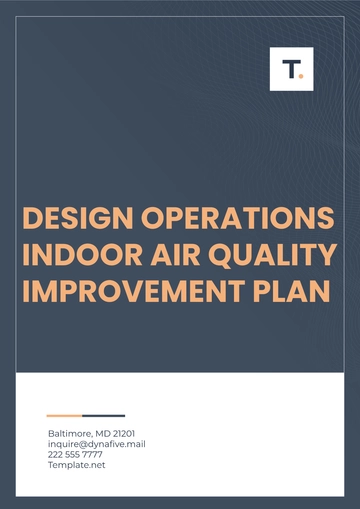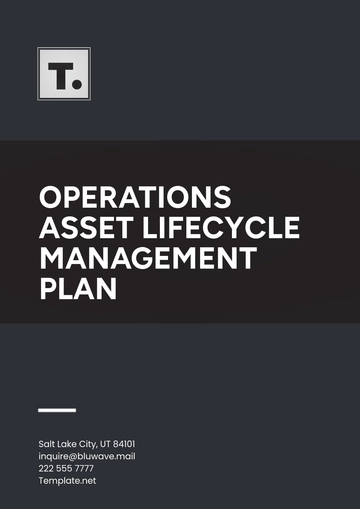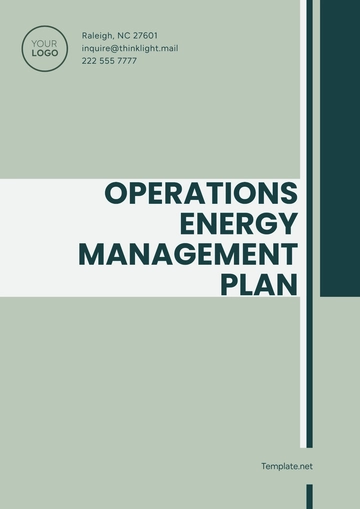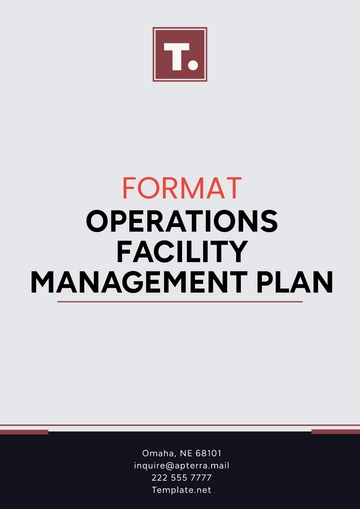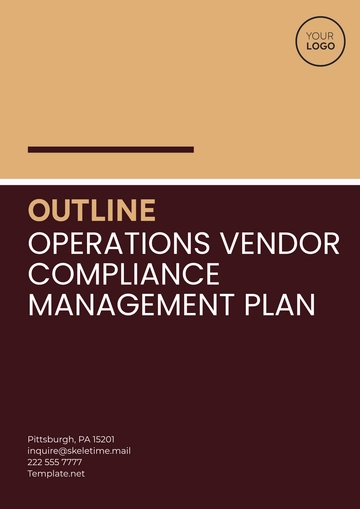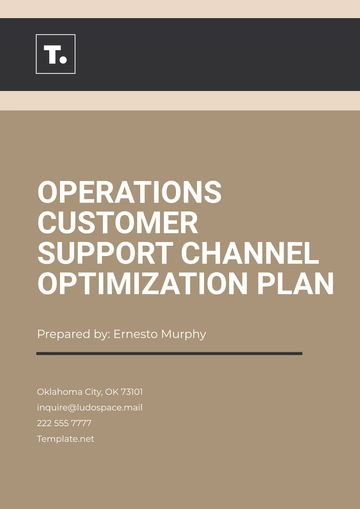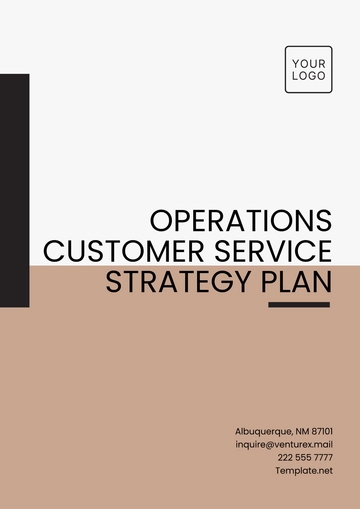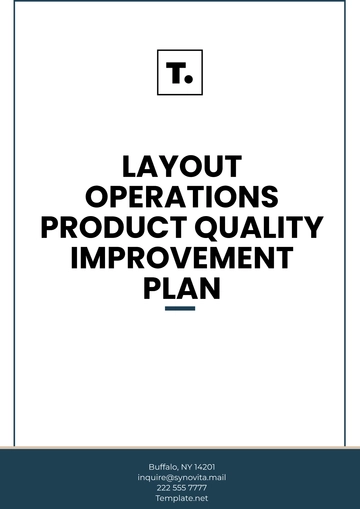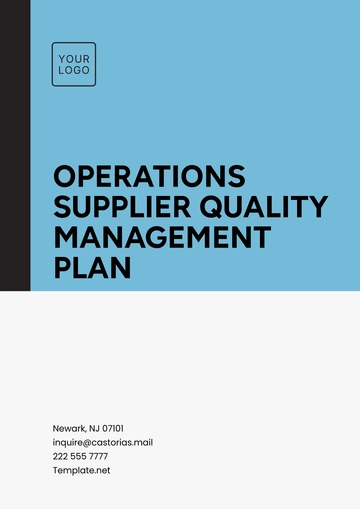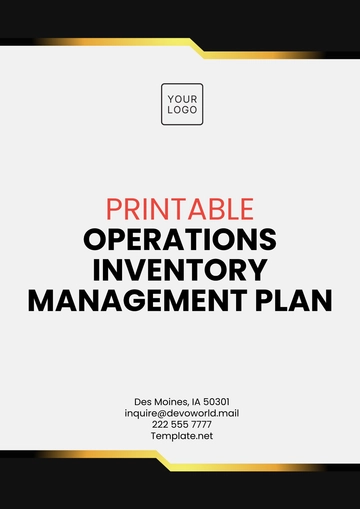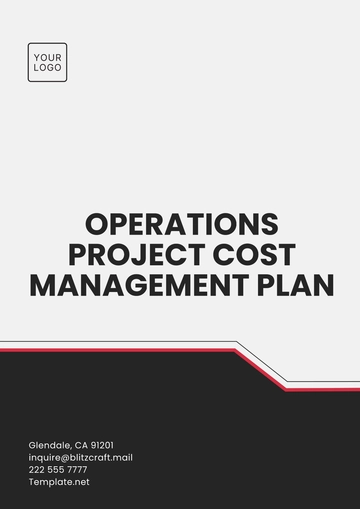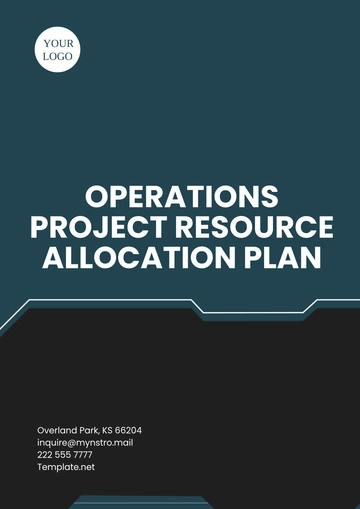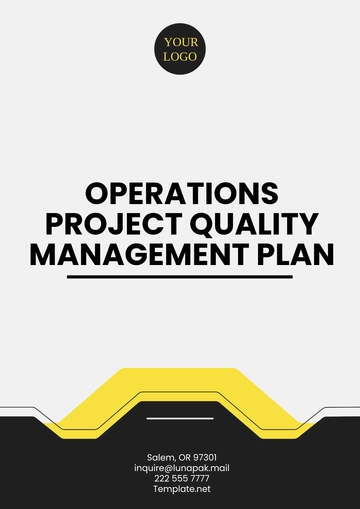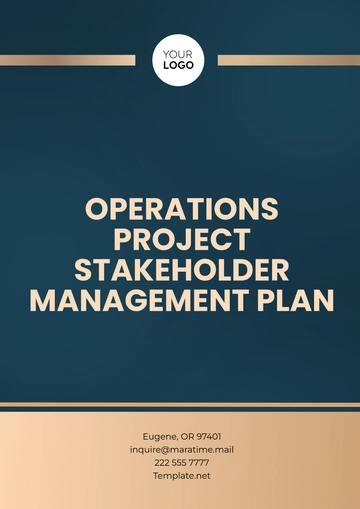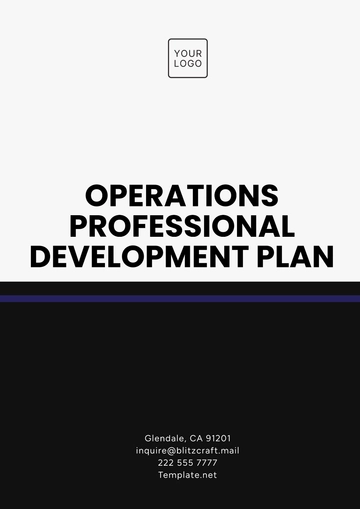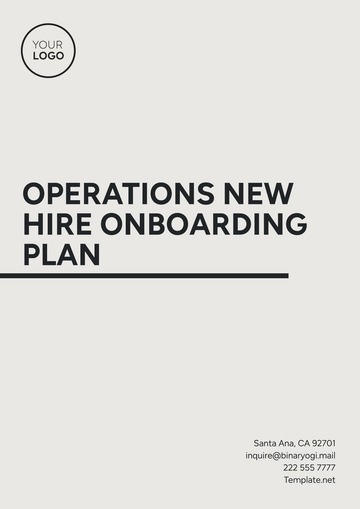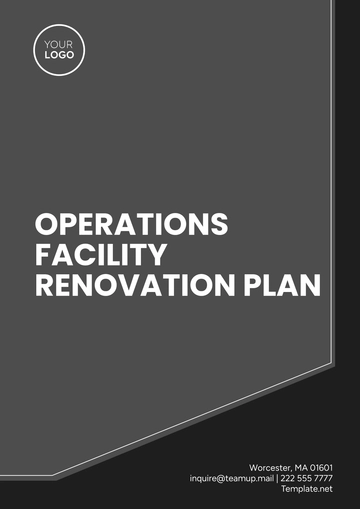Free Interior Design Operational Plan
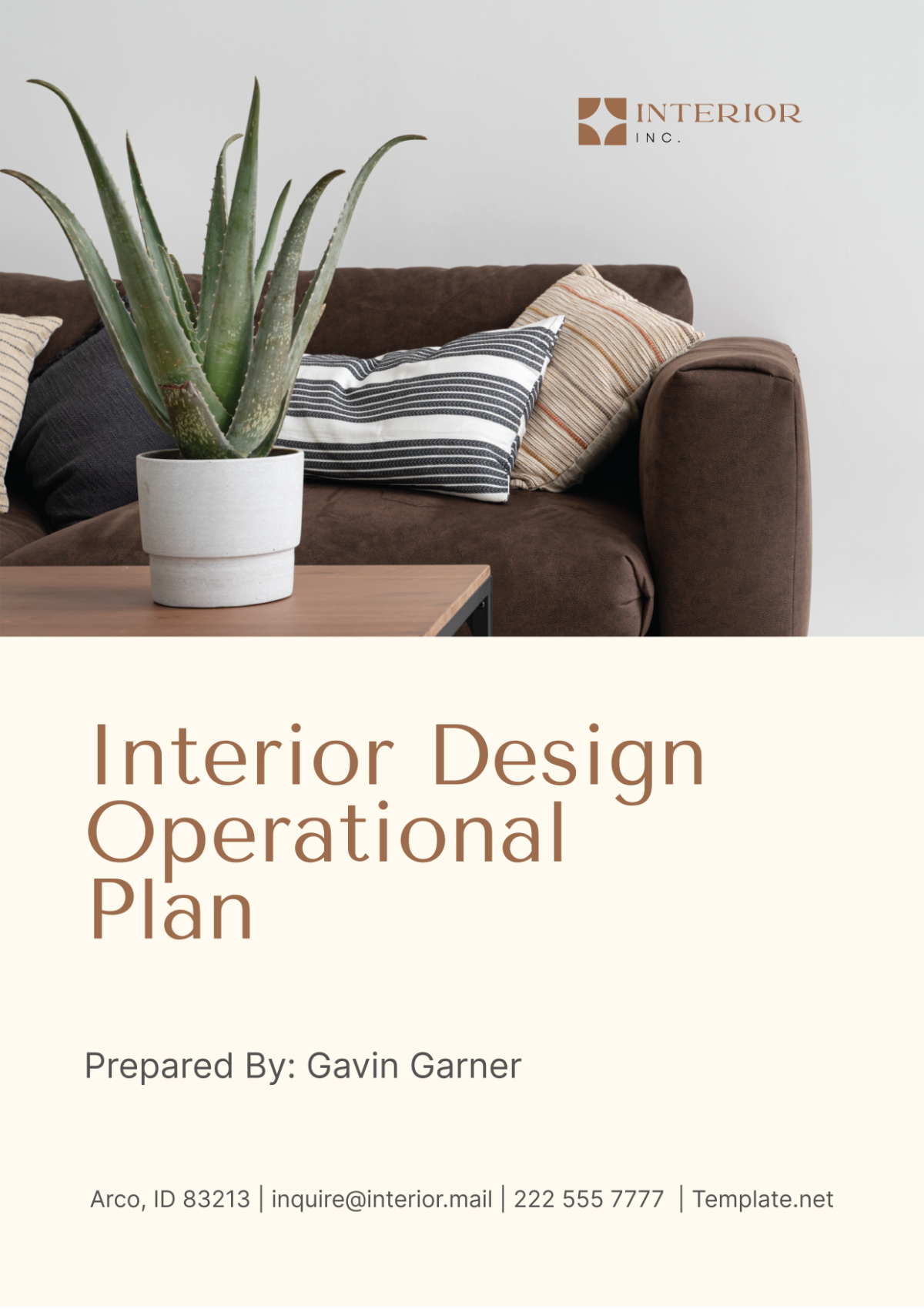
I. Executive Summary
[YOUR COMPANY NAME] is poised to solidify its status as a leader in the interior design industry by implementing a strategic operational plan that focuses on excellence in design outcomes, innovation, and client satisfaction. As the leader of our Interior Design Department, this plan serves as both a roadmap and benchmark for achieving our departmental goals, which are intrinsically linked to the overarching objectives of the company.
Our operational strategy is designed to enhance the efficiency and effectiveness of project management, improve resource utilization, and optimize client interactions to boost satisfaction and loyalty. This document will outline the necessary steps and guidelines that our team will follow to ensure that every project not only meets but exceeds our high standards of quality and creativity.
To reinforce the alignment with the company's broader strategic goals, the operational plan integrates the vision and mission of [YOUR COMPANY NAME], guiding the team towards a cohesive and supportive environment that encourages the delivery of superior design services. By adopting this operational plan, we commit to maintaining rigorous quality standards, meeting project deadlines, and adhering to budget constraints, all of which are fundamental to our success.
II. Business Goals and Objectives
The primary goal of the Interior Design Department at [YOUR COMPANY NAME] is to elevate the aesthetic and functional quality of interior spaces we design, thereby driving higher client satisfaction and encouraging repeat business. To support this goal, we have set specific, measurable objectives that will be used to gauge our success over the coming fiscal year:
Improve project turnaround time by 20%: Currently, the average project completion time stands at 10 weeks. With improved processes and better resource management, we aim to reduce this to 8 weeks.
Reduce overhead costs by 10%: Last year’s overhead costs were recorded at $500,000. Through more efficient operations and cost-saving measures, we plan to reduce these expenses to $450,000.
Launch a new sustainable design service offering: This initiative will cater to the growing demand for eco-friendly and sustainable interior design solutions, differentiating us in the market and attracting a new segment of environmentally conscious clients.
To implement these objectives, we will employ a balanced scorecard approach that covers:
Financial Performance: Monitoring cost savings and revenue growth.
Customer Satisfaction: Gauging client feedback and repeat business rates.
Internal Processes: Enhancing efficiency in project execution and resource utilization.
Learning and Growth: Focusing on staff training and development to foster innovation.
III. Organizational Structure
The success of our operational plan is heavily dependent on a clear and efficient organizational structure within the Interior Design Department of [YOUR COMPANY NAME]. Under the leadership of [YOUR NAME], the department will be structured as follows to ensure optimal performance and project delivery:
Key Roles and Responsibilities:
In the structured environment of [YOUR COMPANY NAME]'s Interior Design Department, each team member plays a critical role. Below is a table detailing the key roles and their specific responsibilities, designed to ensure efficiency and high standards of project delivery.
Role | Responsibilities |
|---|---|
Senior Designers | Lead on major projects, responsible for high-level design decisions and client management. Mentor junior designers. |
Junior Designers | Assist in the planning and execution of design concepts, learn from senior designers, and take on progressively complex projects. |
Project Managers | Oversee logistical aspects of projects, including timeline management, budget adherence, and coordination with contractors and suppliers. |
Administrative Support | Handle clerical and support tasks, ensuring smooth operations within the department. |
This structured approach ensures that each team member contributes effectively to the overarching goals of the department, fostering a collaborative and productive work environment.
Cross-Functional Team Approach:
To enhance creativity and problem-solving, we will implement a cross-functional team strategy. This involves team members from different specialty areas working together on projects. For example, a project may include a senior designer, a junior designer, a project manager, and an administrative professional all collaborating from inception to completion.
This approach ensures that projects benefit from diverse perspectives and specialized input, leading to more innovative and high-quality design solutions.
Technology Integration:
The department will utilize state-of-the-art project management software to track progress, manage budgets, and facilitate communication among team members and with clients. This technology will be integral in integrating client feedback into the design process dynamically, ensuring that client needs are met promptly and accurately.
By defining clear roles and leveraging a collaborative team structure, [YOUR COMPANY NAME]’s Interior Design Department will not only meet the dynamic needs of the market but also excel in delivering projects that are both aesthetically pleasing and functionally superior. This organizational structure is designed to support our business goals, fostering an environment where creativity and efficiency thrive.
IV. Project Management Strategies
Effective project management is central to the successful delivery of interior design projects at [YOUR COMPANY NAME]. By integrating both traditional and agile methodologies, our approach adapts swiftly to client needs and changes in project scope, ensuring that every project meets its deadlines and stays within budget.
Project Management Approach:
Phased Project Approach: We break down each project into distinct phases to ensure thorough oversight and execution. This methodological approach includes:
Phase | Activities |
|---|---|
Initiation | Project kickoff, goal setting, and initial client consultations. |
Planning | Detailed project planning, resource allocation, and scheduling. |
Design | Concept development, client presentations, and design finalization. |
Execution | Implementation of design plans, procurement of materials, and onsite management. |
Closure | Final review with client, project handover, and post-project review. |
Agile Elements: To enhance flexibility, agile methodologies will be integrated, such as sprint planning, regular stand-ups, and iterative reviews with stakeholders to ensure alignment and adaptability to changes.
Risk Management: Identify potential project risks early with mitigation strategies in place to handle issues such as supply chain disruptions, client change requests, or unforeseen delays.
Technology Integration: Utilize advanced project management software tools that provide real-time tracking of project milestones, budget management, and facilitate team communication.
Regular Communication Strategy:
Weekly Status Updates: Clients and stakeholders will receive updates every week to keep them informed of progress and any critical adjustments needed.
Milestone Reviews: At key project milestones, in-depth reviews will be conducted to ensure that the project meets the design standards and client expectations.
Feedback Sessions: Regular feedback sessions will be organized to gather client inputs and integrate them promptly into the ongoing project work.
This strategic approach ensures that our projects are delivered on time, within scope, and to the satisfaction of our clients, fostering a reputation for reliability and quality in the interior design market.
V. Evaluation and Continuous Improvement
To maintain and enhance the quality and effectiveness of our operational processes, [YOUR COMPANY NAME] commits to a systematic evaluation and continuous improvement strategy. This involves regularly assessing our project outcomes and operational practices against set key performance indicators (KPIs).
Key Performance Indicators:
Project Delivery Time: Track the time taken from project initiation to completion.
Budget Adherence: Monitor project costs to ensure they do not exceed budgeted amounts.
Client Satisfaction Levels: Measured through post-project surveys and direct feedback.
Innovation Metrics: Evaluate the implementation of new design techniques and sustainability practices in projects.
Continuous Improvement Practices:
Training and Development: Regular training sessions for all design staff on the latest interior design trends, software, and project management skills.
Industry Engagement: Attendance at industry seminars and conferences to stay ahead of market trends and emerging technologies.
Innovation Encouragement: Allocate time and resources for team members to explore innovative design solutions and improvement to existing methodologies.
Feedback and Review Mechanisms:
Digital Feedback Tools: Implement digital surveys and feedback mechanisms to gather client and stakeholder perceptions immediately after project delivery.
Quarterly Review Meetings: Conduct quarterly meetings to review performance against KPIs, discuss successes, and identify areas for improvement.
Annual Strategy Sessions: Host annual strategy sessions to refine operational processes and set goals for the upcoming year based on the reviews and feedback received.
These processes ensure that [YOUR COMPANY NAME] not only reacts to past performances but actively anticipates future challenges and opportunities, keeping our services competitive and aligned with client needs.
VI. Employee Relations and Well-Being
At [YOUR COMPANY NAME], we believe that the well-being of our employees is paramount to our success. We are dedicated to creating a work environment that supports both their professional and personal growth.
Employee Support Initiatives:
Flexible Work Policies: Implement flexible working hours and remote work options to support work-life balance.
Health and Wellness Programs: Offer programs that include health screenings, fitness memberships, and mental health resources.
Creative Workspaces: Design office spaces that stimulate creativity and comfort, enhancing overall job satisfaction.
Team Building and Culture:
Regular Team Outings: Organize quarterly team outings and annual retreats that focus on team bonding and relaxation.
Creative Challenges: Host monthly creative challenges to encourage innovation and fun in the workplace.
Feedback and Communication:
Open Communication Channels: Maintain open lines of communication where employees can share ideas and concerns without fear of reprisal.
Regular Employee Surveys: Conduct bi-annual surveys to gauge employee satisfaction and gather suggestions for improving the work environment.
By fostering a supportive and stimulating work environment, [YOUR COMPANY NAME] ensures that our team remains motivated and engaged, which is essential for delivering high-quality design projects and maintaining high levels of client satisfaction.
- 100% Customizable, free editor
- Access 1 Million+ Templates, photo’s & graphics
- Download or share as a template
- Click and replace photos, graphics, text, backgrounds
- Resize, crop, AI write & more
- Access advanced editor
Optimize your interior design operations with the Interior Design Operational Plan Template from Template.net. This versatile tool offers a structured framework to streamline processes and enhance efficiency. Editable and customizable, it adapts effortlessly to your business needs using our AI editor tool. Elevate your operational strategy and drive success with this comprehensive template guiding your interior design endeavors.
You may also like
- Finance Plan
- Construction Plan
- Sales Plan
- Development Plan
- Career Plan
- Budget Plan
- HR Plan
- Education Plan
- Transition Plan
- Work Plan
- Training Plan
- Communication Plan
- Operation Plan
- Health And Safety Plan
- Strategy Plan
- Professional Development Plan
- Advertising Plan
- Risk Management Plan
- Restaurant Plan
- School Plan
- Nursing Home Patient Care Plan
- Nursing Care Plan
- Plan Event
- Startup Plan
- Social Media Plan
- Staffing Plan
- Annual Plan
- Content Plan
- Payment Plan
- Implementation Plan
- Hotel Plan
- Workout Plan
- Accounting Plan
- Campaign Plan
- Essay Plan
- 30 60 90 Day Plan
- Research Plan
- Recruitment Plan
- 90 Day Plan
- Quarterly Plan
- Emergency Plan
- 5 Year Plan
- Gym Plan
- Personal Plan
- IT and Software Plan
- Treatment Plan
- Real Estate Plan
- Law Firm Plan
- Healthcare Plan
- Improvement Plan
- Media Plan
- 5 Year Business Plan
- Learning Plan
- Marketing Campaign Plan
- Travel Agency Plan
- Cleaning Services Plan
- Interior Design Plan
- Performance Plan
- PR Plan
- Birth Plan
- Life Plan
- SEO Plan
- Disaster Recovery Plan
- Continuity Plan
- Launch Plan
- Legal Plan
- Behavior Plan
- Performance Improvement Plan
- Salon Plan
- Security Plan
- Security Management Plan
- Employee Development Plan
- Quality Plan
- Service Improvement Plan
- Growth Plan
- Incident Response Plan
- Basketball Plan
- Emergency Action Plan
- Product Launch Plan
- Spa Plan
- Employee Training Plan
- Data Analysis Plan
- Employee Action Plan
- Territory Plan
- Audit Plan
- Classroom Plan
- Activity Plan
- Parenting Plan
- Care Plan
- Project Execution Plan
- Exercise Plan
- Internship Plan
- Software Development Plan
- Continuous Improvement Plan
- Leave Plan
- 90 Day Sales Plan
- Advertising Agency Plan
- Employee Transition Plan
- Smart Action Plan
- Workplace Safety Plan
- Behavior Change Plan
- Contingency Plan
- Continuity of Operations Plan
- Health Plan
- Quality Control Plan
- Self Plan
- Sports Development Plan
- Change Management Plan
- Ecommerce Plan
- Personal Financial Plan
- Process Improvement Plan
- 30-60-90 Day Sales Plan
- Crisis Management Plan
- Engagement Plan
- Execution Plan
- Pandemic Plan
- Quality Assurance Plan
- Service Continuity Plan
- Agile Project Plan
- Fundraising Plan
- Job Transition Plan
- Asset Maintenance Plan
- Maintenance Plan
- Software Test Plan
- Staff Training and Development Plan
- 3 Year Plan
- Brand Activation Plan
- Release Plan
- Resource Plan
- Risk Mitigation Plan
- Teacher Plan
- 30 60 90 Day Plan for New Manager
- Food Safety Plan
- Food Truck Plan
- Hiring Plan
- Quality Management Plan
- Wellness Plan
- Behavior Intervention Plan
- Bonus Plan
- Investment Plan
- Maternity Leave Plan
- Pandemic Response Plan
- Succession Planning
- Coaching Plan
- Configuration Management Plan
- Remote Work Plan
- Self Care Plan
- Teaching Plan
- 100-Day Plan
- HACCP Plan
- Student Plan
- Sustainability Plan
- 30 60 90 Day Plan for Interview
- Access Plan
- Site Specific Safety Plan
